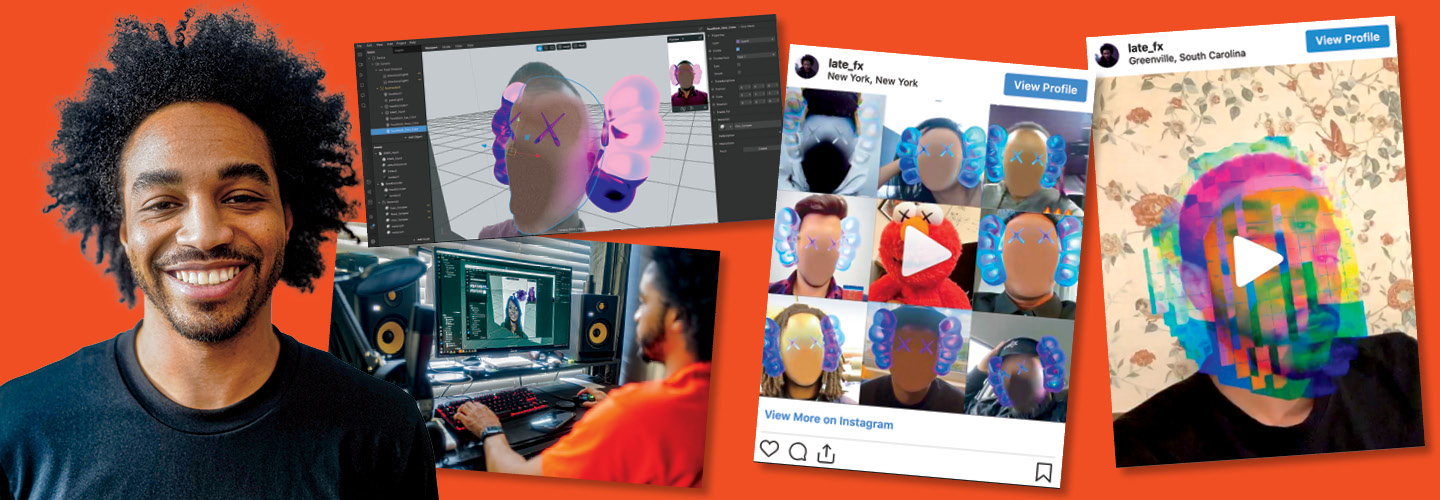Images courtesy of Leighton McDonald.
Leighton McDonald: I am a concept designer and a spatial interaction designer. I work with augmented reality (AR) and virtual reality (VR) to communicate ideas. Lately, I’ve been creating filters for companies and artists. I’ve created about 63 filters so far. I was trying to make at least one a week last year, when the pandemic happened. Everybody was home, so I figured I might as well show them my art in 3-D and give them something to play with.

